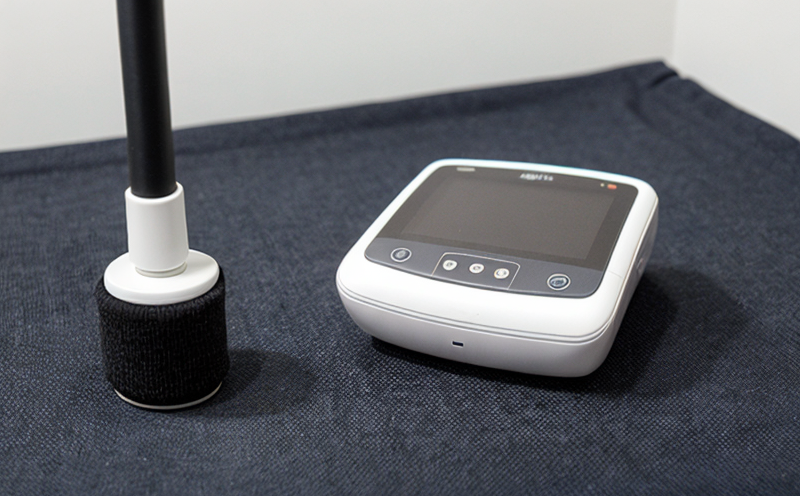Skin contact safety testing of biomedical smart fabrics
The skin contact safety testing of biomedical smart fabrics is a critical process in ensuring that textiles intended to come into direct contact with human skin are safe and compliant with relevant standards. This service focuses on assessing the biocompatibility, durability, and overall safety of these advanced materials used in medical devices, wearable health monitors, and other applications where prolonged skin contact may occur.
Biomedical smart fabrics incorporate advanced technologies such as sensors, microcontrollers, and wireless communication capabilities to monitor physiological parameters like heart rate, temperature, or even provide therapeutic functions. The safety testing ensures that these functionalities do not compromise the wearer's comfort or health. This includes evaluating the fabric for any potential allergens, irritants, or harmful chemicals that could cause adverse reactions.
The test procedure involves multiple stages, including initial sample preparation, laboratory analysis, and final reporting. Samples are first prepared according to specified guidelines, ensuring they represent the actual conditions under which the fabrics will be used. The testing then proceeds with a series of validated methods aimed at assessing various properties such as pH levels, cytotoxicity, sensitization potential, and more.
Advanced instrumentation plays a crucial role in this process, providing precise measurements that can detect even trace amounts of potentially harmful substances. Real-world applications highlight the importance of this testing; for instance, in wearable health monitoring devices where continuous skin contact is essential, ensuring no adverse effects on the wearer's skin is paramount.
Compliance with international standards like ISO 10993-5, which covers cytotoxicity tests, and EN 468, which deals with sensitization potential of medical textiles, is mandatory for products destined for European markets. These standards provide a framework for manufacturers to follow when designing and testing their biomedical smart fabrics.
Understanding the implications of these tests is essential for quality managers, compliance officers, R&D engineers, and procurement teams involved in the development and production of such advanced materials. By adhering to strict protocols and leveraging state-of-the-art technology, labs can provide reliable data that not only meets regulatory requirements but also enhances product safety and consumer trust.
| Applied Standards | Description |
|---|---|
| ISO 10993-5 | Cytotoxicity test for medical devices |
| EN 468 | Sensitization potential of medical textiles |
| ASTM D7566 | Biocompatibility testing of textiles |
Applied Standards
| Standard | Description |
|---|---|
| ISO 10993-5:2018 | This standard specifies the procedure for determining whether or not a test article is cytotoxic to cells in vitro, using an acute toxicity test. |
| EN 468:2007 | This European standard defines the requirements and methods used to assess the potential of medical textiles to cause allergic contact dermatitis on human skin. |
| ASTM D7566-19a | American Society for Testing Materials’ standard detailing biocompatibility testing procedures for textiles intended for use in medical applications. |
The application of these standards ensures that the testing process is rigorous and consistent, providing reliable data to support product safety claims. Compliance with these international norms not only guarantees regulatory approval but also builds confidence among end-users regarding the quality and reliability of biomedical smart fabrics.
Customer Impact and Satisfaction
The results of skin contact safety testing play a pivotal role in enhancing customer satisfaction by ensuring that products meet stringent safety standards. Compliance with international regulations like ISO 10993-5 and EN 468 is crucial for manufacturers aiming to penetrate competitive markets, especially those serving European consumers who have high expectations regarding product safety.
By offering this comprehensive testing service, laboratories contribute significantly to reducing the risk of adverse reactions among users. This, in turn, fosters trust between customers and brands, leading to increased brand loyalty and positive customer reviews. The detailed reports generated from these tests also enable manufacturers to make informed decisions about product improvements or modifications based on real-world data.
Moreover, successful completion of such rigorous testing can open up new market opportunities for businesses willing to invest in quality assurance measures. It demonstrates a commitment to excellence that differentiates them from competitors, potentially leading to higher sales and greater market share. In essence, the impact extends beyond mere compliance; it enhances reputation and drives business growth.
Use Cases and Application Examples
- Wearable health monitors used in hospitals for continuous patient monitoring.
- Pacemaker leads that need to be in direct contact with the skin during implantation.
- Surgical gowns designed to protect both healthcare workers and patients.
| Use Case | Description |
|---|---|
| Wearable Health Monitors | The sensors embedded in these devices must be safe for extended periods of skin contact without causing irritation or allergic reactions. |
| Pacemaker Leads | The material used should not only ensure biocompatibility but also withstand sterilization processes multiple times throughout the device's lifecycle. |
| Surgical Gowns | These must provide a barrier against pathogens while remaining breathable and comfortable for extended use. |
The diverse range of applications underscores the necessity of thorough skin contact safety testing. Each scenario presents unique challenges that require tailored approaches, highlighting the importance of expertise in this specialized field.





